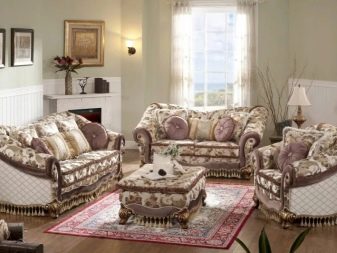Upholstery fabrics
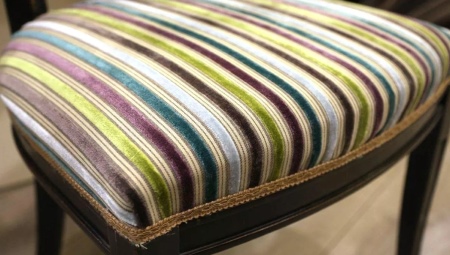
Furniture fabric (material for upholstering furniture) has been used for a long time. There are different types of upholstery fabrics, so when ordering, you need to clearly understand how water-repellent upholstery fabric differs from products of other categories. It is also worth getting acquainted with the offers of various manufacturers of such products.
Categories
The categorization is very important. It allows you not only to evaluate the characteristics of specific samples, but also to understand how high quality they can be. Lightweight materials are considered to be materials such as cotton and similar substances. They are suitable for rarely used (lightly loaded) furniture. Next comes:
- the first number (sofa, slightly longer service life) - corduroy, flock over textiles;
- the second category - a little more wear resistance and resistance to the sun, moisture, a variety of designs;
- the third group - materials with a special sophistication of texture and a complicated production process (such as tapestry or nubuck);
- on the 4th place, especially dense types of upholstery, including suede;
- Category 5 - dense and wear-resistant types of products that need constant care;
- Category 6 - natural materials that can withstand long-term use at high load (arpatek, eco-leather);
- 7 (and sometimes 8 category stands out) includes natural leather and other upholstery of the highest quality with corresponding durability and price.
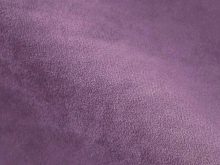

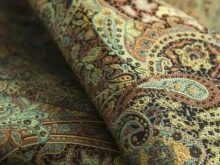
Description of velor
Acquaintance with the general classification of upholstery fabrics, as is obvious, can not only clarify, but also confuse the matter, especially for inexperienced people.The solution to the problem will be to study the specific product options that the textile industry offers. Velor is durable and dense. It is relatively easy to recognize it due to its specific thick pile. Velor contains a variety of synthetic and natural fibers.
Allocate:
- smooth type (flat surface, vertical pile placement);
- shaped (characterized by pronounced heterogeneity);
- printed (having a colored pattern);
- embossed (also with a pattern, and already imitating more elite textures).
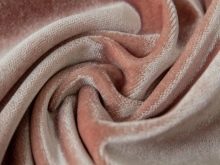
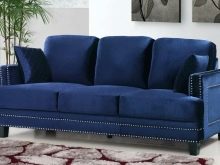
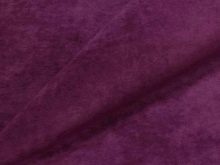
Leather and leatherette
Natural skin is warm and velvety, aesthetically pleasing. It is not for nothing that it was for many decades that it was considered the standard of furniture decoration. Even in the 21st century, this material has not lost its inimitable aroma and unique aesthetics. He serves for a very long time and is only able to improve his condition over time. Finally, leather upholstery can be strictly individual and unique.
But its high cost spoils the whole thing. Partly the way out is to use a more modern and affordable material - eco-leather. Its top layer is created from a polymer mass. Eco-leather is strong and durable, it is not subject to wear and tear. Such a coating is elastic and can be painted in any color.
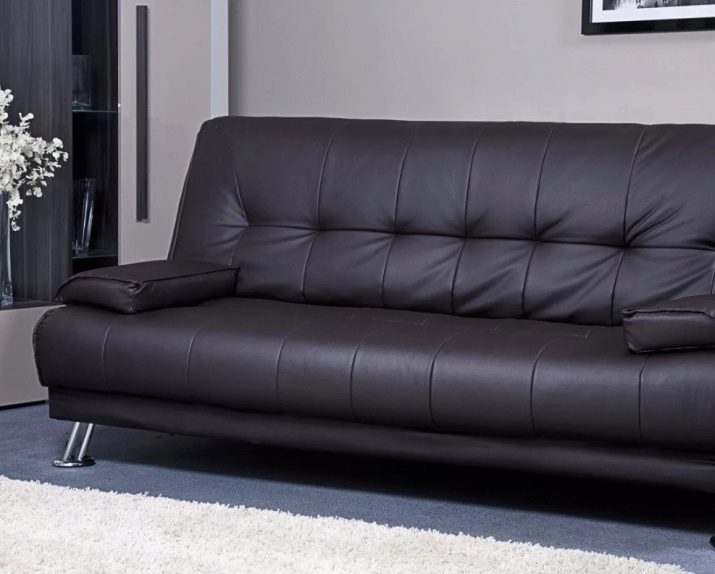
You can also note such properties of eco-leather as:
- environmental friendliness;
- hygroscopicity;
- lack of tendency to stretch;
- excellent breathability;
- strong damage to any cuts and scratches;
- tendency to quickly clog.
Leatherette is the most budget material of the group. Products with such upholstery are less durable than leather and eco-leather.
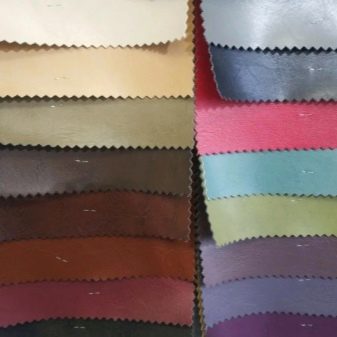

Tapestry characteristics
The history of tapestry is very long, and in ancient times it cost a lot of money. It became possible to use it for upholstering furniture on a large scale only after the appearance of the textile industry. Tapestry fabrics are very demanding on the quality of both the weft and the warp. A wide variety of fibers can be used for their production, including sheep's wool.
Also, cotton and linen, synthetic fiber can be taken as a basis. There is even a tapestry with gold and silver threads. Typical for him:
- antistatic;
- a wide range of colors;
- ease of care;
- increased density;
- low susceptibility to wear;
- severity;
- excessive rigidity.

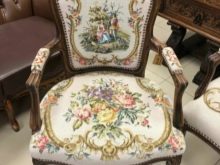
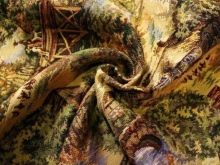
Description of jacquard
Such fabric is elegant and has an expressive large pattern. It is perfect even for the decoration of luxury furniture. From a production point of view, the use of jacquard is quite difficult and time consuming. Such matter is strong enough and does not require sophisticated care. Strictly speaking, jacquard is not a separate type of fibers, but their specific weave.
This category may include:
- organza;
- jersey;
- velours;
- other options with woven prints.
Jacquard furniture looks harmonious in any room. It is extremely tight and comfortable. Varying specific fabrics allows the designs to be adapted to a wide variety of operating conditions.
Jacquard bleaching and harsh cleaning chemicals are not permitted.
The fabric itself is widely used in covering mattresses, in obtaining related interior items and, of course, in working with furniture products.
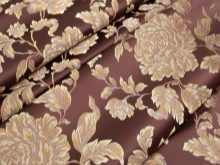
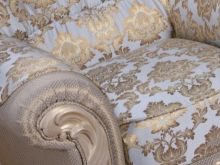
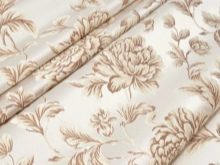
What other fabrics are there for upholstery?
Of course, on these listed varieties, the range of options for upholstery is not limited to. Suede and matting, microfiber and non-flammable corduroy are just a few alternative examples. Only knowing the features of the key options, you can choose the optimal solution for the constriction. A number of manufacturers supply striped upholstery. Colors and textures, practical properties and shelf life can vary greatly.
Nubuck
This fabric is pretty close to suede. But in fact, genuine nubuck is a subspecies of natural leather. It is subjected to a special treatment using fine abrasives.The material differs from ordinary leather and suede in increased velvety. It is categorically not subject to wetting, including wet cleaning.
Mechanical cleaning of nubuck products is also not allowed. Another weakness of this material is its rapid degradation under sunlight. Artificial nubuck is also an elite finishing material. But it is relatively inexpensive. Visually, such a coating resembles velvet.
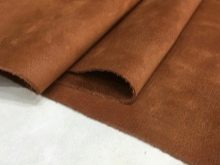

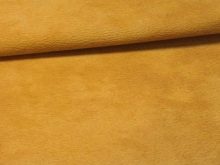
Chenille
This upholstery option appeared on the domestic market relatively recently. But he has already managed to win recognition and high authority. Chenille is durable and has little wear and tear. For him, both satin and tapestry, jacquard, twill weave can be typical. Jacquard subspecies are the most expensive, but also the most perfect.
Important properties of chenille:
- resistance to dry cleaning;
- resistance to mechanical stress;
- color stability;
- low susceptibility to ignition;
- attractive tactile texture.
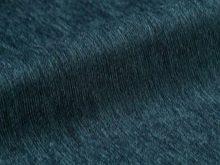

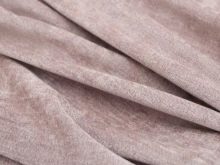
Flock
The common name for this upholstery ("anti-claw") explains a lot. It is a non-woven fabric in the form of a base with glued pile. Cotton flock is rarely used in furniture making. It wears out too quickly. More common are polyamide and polyester varieties.
The flock is silky and soft to the touch. It immediately gives the impression of an expensive fabric. With proper care, a long service life is guaranteed.
It must be remembered that unscrupulous manufacturers often use formaldehyde-based glue for the production of flock. Low-quality material also does not allow air to pass through.
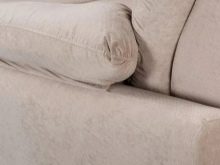
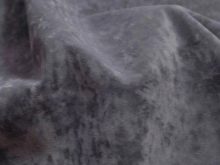

Oxford
Such upholstery is in demand in the production of frameless furniture. But that doesn't mean it's useless in wireframes. A key characteristic is how thick and dense the polyurethane coating will be. Matter endures both very high and very low temperatures.

Microfiber
This upholstery fabric is favored by its very low susceptibility to abrasion.
Almost any liquid found in everyday life will not cause damage to the matter. It can be safely cleaned with a standard household vacuum cleaner.
Durability is great enough not to be afraid of the claws of even the most active cats and dogs. The upholstery pleasant to the touch will be completely hypoallergenic.
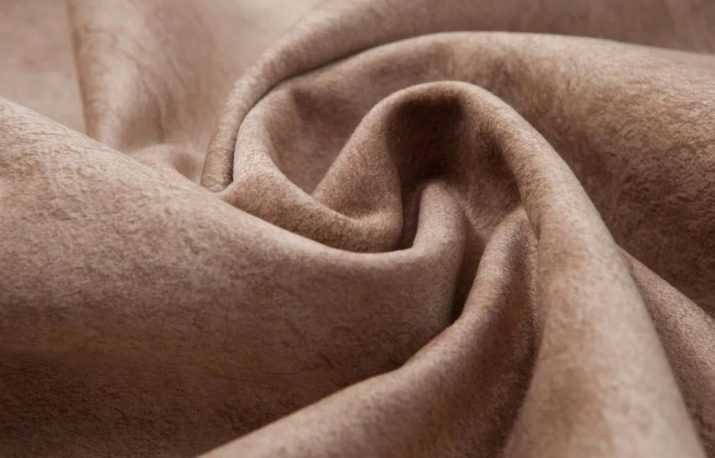
Velveteen
Furniture makers began to use corduroy hundreds of years ago. And all this time, its relevance is beyond doubt. Even in the 21st century, corduroy casing for furniture is quite relevant due to its anti-static characteristics. From the point of view of the generally accepted classification, this is a subspecies of velor. Basically, they are based on cotton, polyester and nylon, the proportions between which can vary greatly.
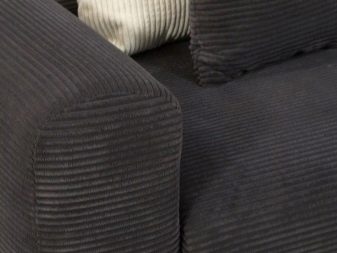

Other
The use of velvet has an even longer history than the use of corduroy. This fabric is fundamentally different from its counterpart used in sewing clothes, high strength and durability. Synthetic velvet subspecies visually is not inferior to its natural type. In addition, it is easier to care for, and washing is not a problem.
There are various options:
- with short pile;
- with texture;
- embossed;
- with stencils.
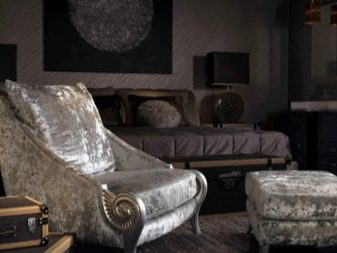
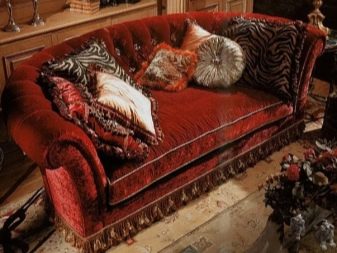
Quilted upholstery or capitonné has been widely used since the middle of the 19th century. This coating forms a comfortable soft surface. It is in demand in classic design styles.

Cashmere is prized for its elite and luxurious look. It practically does not roll, and also:
- completely safe in terms of allergies;
- has a micromassage effect;
- very durable, no worse than wool or silk;
- serves for a long time without replacement and repair.
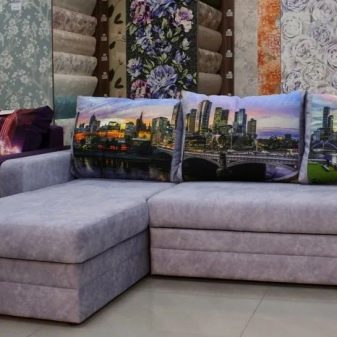
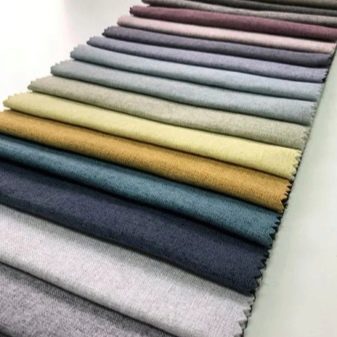
Water-repellent upholstery fabric is also needed in many cases, and not just for open areas. Faux suede is a good option. It will look expensive and solid.
It will be very difficult to tear the faux suede.Ultraviolet radiation is not dangerous for it, as well as clogging.

Self-adhesive furniture upholstery allows you to update the appearance of your products over time. The film is not afraid of high humidity. A variety of textures and colors allows you to choose the optimal visual solution. No complicated preparation for gluing is needed. However, you will have to do all the work efficiently and without haste.

Top manufacturers
High quality upholstery fabrics for furniture are made in Italy. We are talking about companies:
- Italvelutti;
- Calligaris;
- Gervasoni.
Firms stand out in Turkey:
- Marstex;
- MariamTex;
- Sertex-Flokser Group;
- Demkay Tekstil LTD.
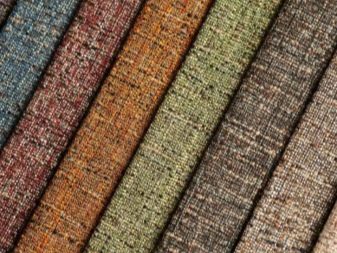
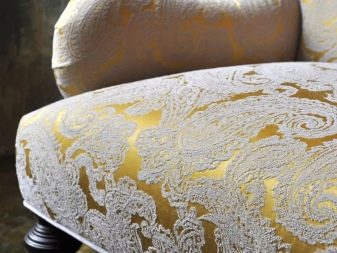
Other companies include:
- Creation Baumann;
- "Amethyst";
- Tverskoy Polyester;
- Pavlin;
- Nitex.
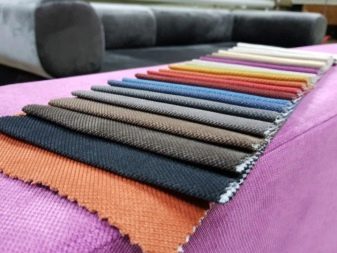
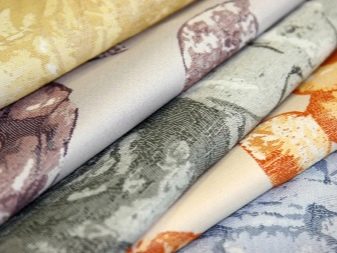
How to choose a material?
The key requirement is dimensions, that is, the length and width of the fabric to be purchased. But it is impossible to restrict oneself to these parameters; one should also pay attention to the practical properties of the product. They are selected individually for each place, and the most practical matter in one case turns out to be completely inapplicable in another. In most cases, natural fiber textiles should be used for the sofa. But it also allows the use of polyamide, polyester.
Chairs in the office (even if it is a home office) should not only be presentable, but also be highly abrasion resistant. For these reasons, the best choice is either eco-leather or high-quality natural leather. For a children's room, it is better to focus on simple materials with high sanitary and environmental properties. Highly cleanable cotton jacquard is an excellent choice.
In living rooms, soft sofas are installed, which should be resistant to wear and tear. The best upholstery for them will be solid synthetics.
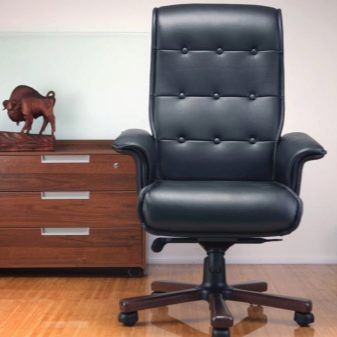
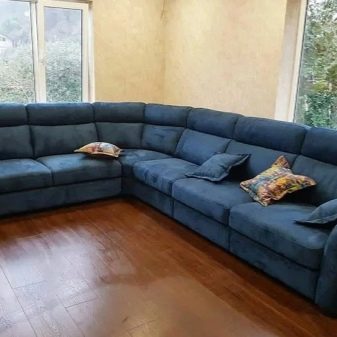
For garden furniture fabrics, in addition to high aesthetic qualities and reliability, another urgent requirement is put forward. - resistance to weathering. It is better to give preference to the products of firms that give a guarantee for at least 5 years. In this case, the risk will be the smallest. Along with water-repellent qualities, dirt rejection is also relevant. Catchy colors of garden furniture are useless, the main thing is that it is practical.
For the kitchen corner, you need to select materials that do not require sophisticated care. Along with eco-leather, a matting turns out to be a decent choice. It is quite wear-resistant and unpretentious. Such coverage is relatively inexpensive. But if contact with animals is likely, it is unlikely to last long.
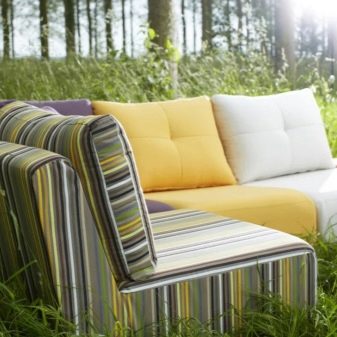
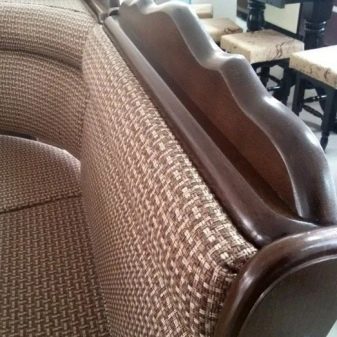
Other options would be:
- jacquard;
- chenille;
- micro velor.
The texture of the upholstery is directly related to its practical characteristics. Along with visuals, tactile properties should also be assessed.
They are especially important if the furniture will be in the kitchen or in the bedroom. Plaid upholstery is prized for its ability to relieve emotional stress. It definitely outperforms the solid color interior design.
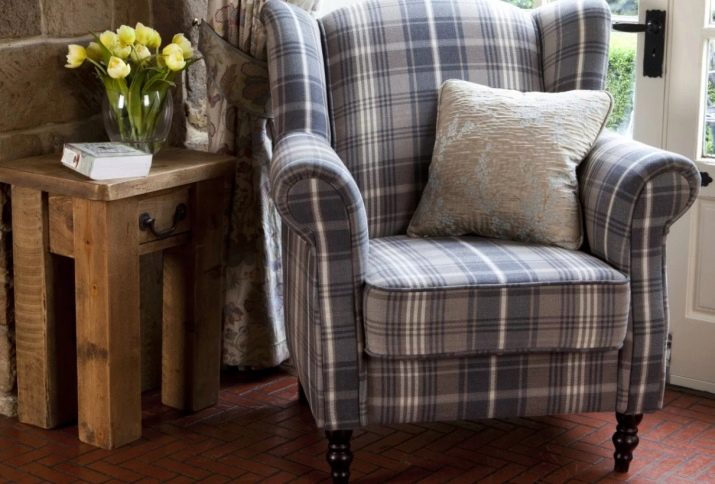
Checkered inclusions immediately create a mood for respectability and comfort of the environment. They are considered almost an obligatory attribute of a cozy home. The cell is appropriate in the English and Scottish interior styles. A checkered sofa can become a juicy filling of a modern interior. As for the colors, no one has come up with anything better than a neutral upholstery fabric.
As much as you like a green or other vibrant setting, it is important to think three times before using such an idea. Trendy concepts can become outdated in a couple of years, but established approaches will delight even the most picky people. It is better not to use a complex pattern on sectional or corner furniture; on sofas, it is better not to use it, because as the surface stretches, it can be distorted. Jacquard and matting will fit well into the solid official format of the premises. Velvet velor is preferred in highly personal and romantic rooms.
You can decide on the style and color both independently and with the help of a designer. The density of the fabric should be at least 0.2 kg per 1 m2. But you should not limit yourself to this indicator when assessing wear resistance. It should be borne in mind that chenille with a density of 0.4 kg is less resistant than micro velor with a density of 0.25 kg. In addition to abrasion tests, pilling tests should be carried out.
